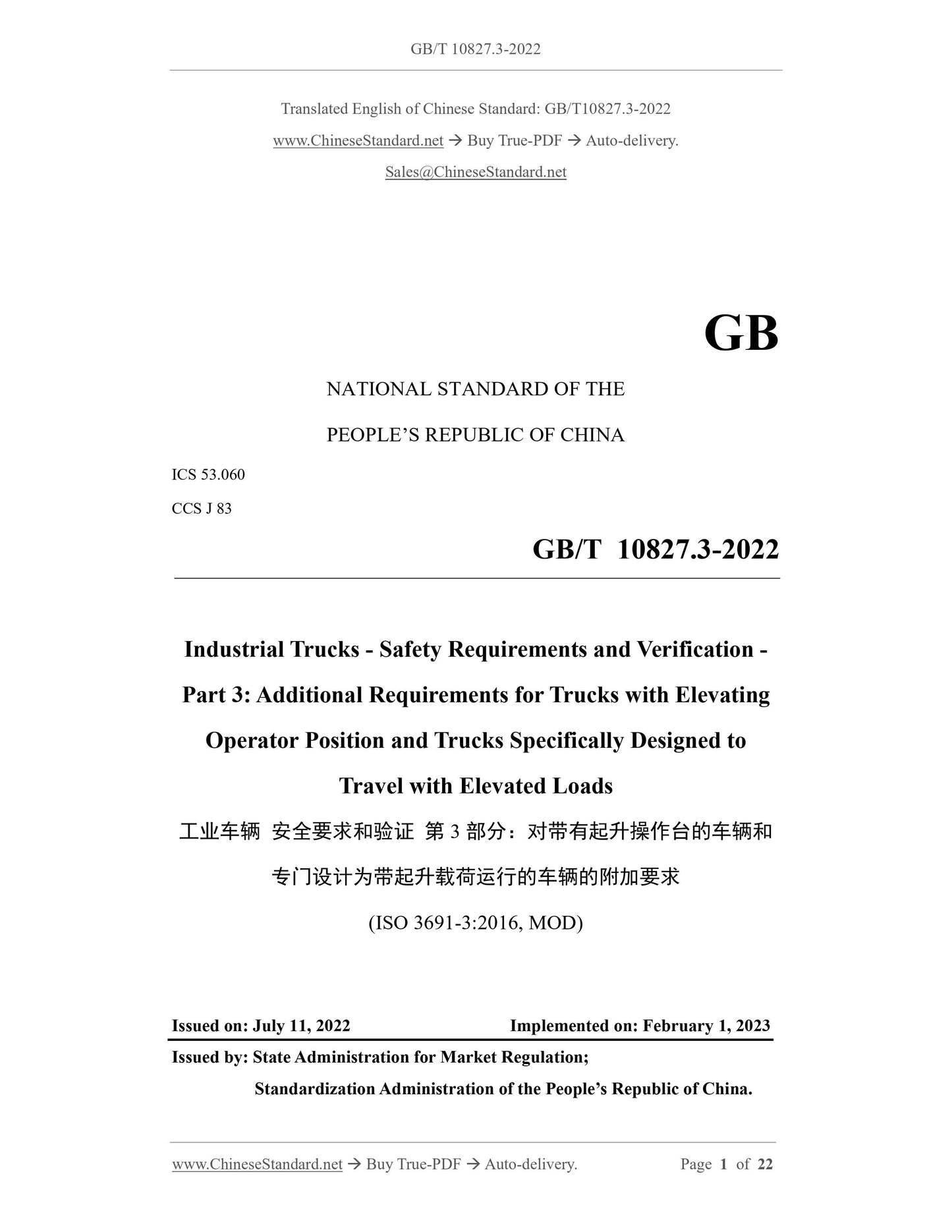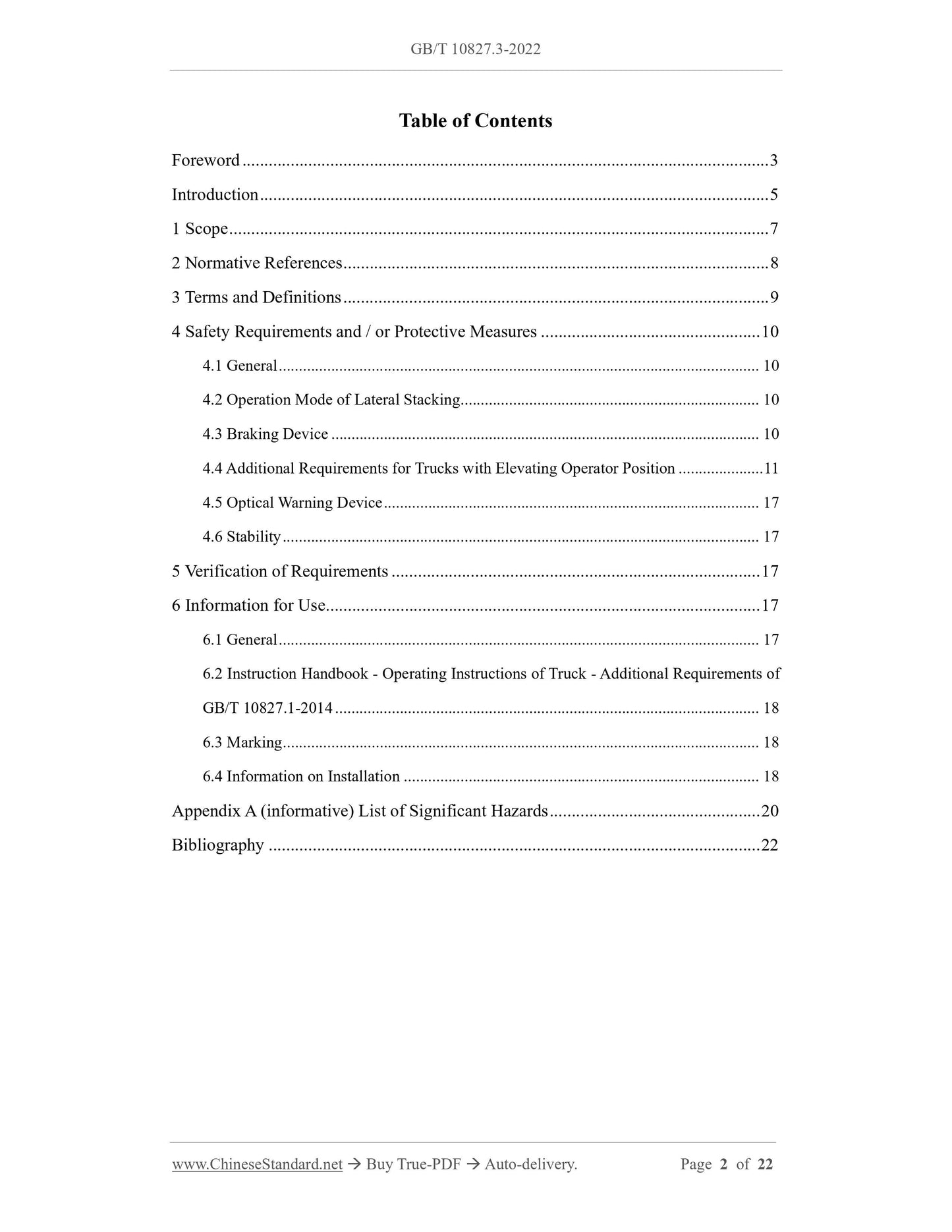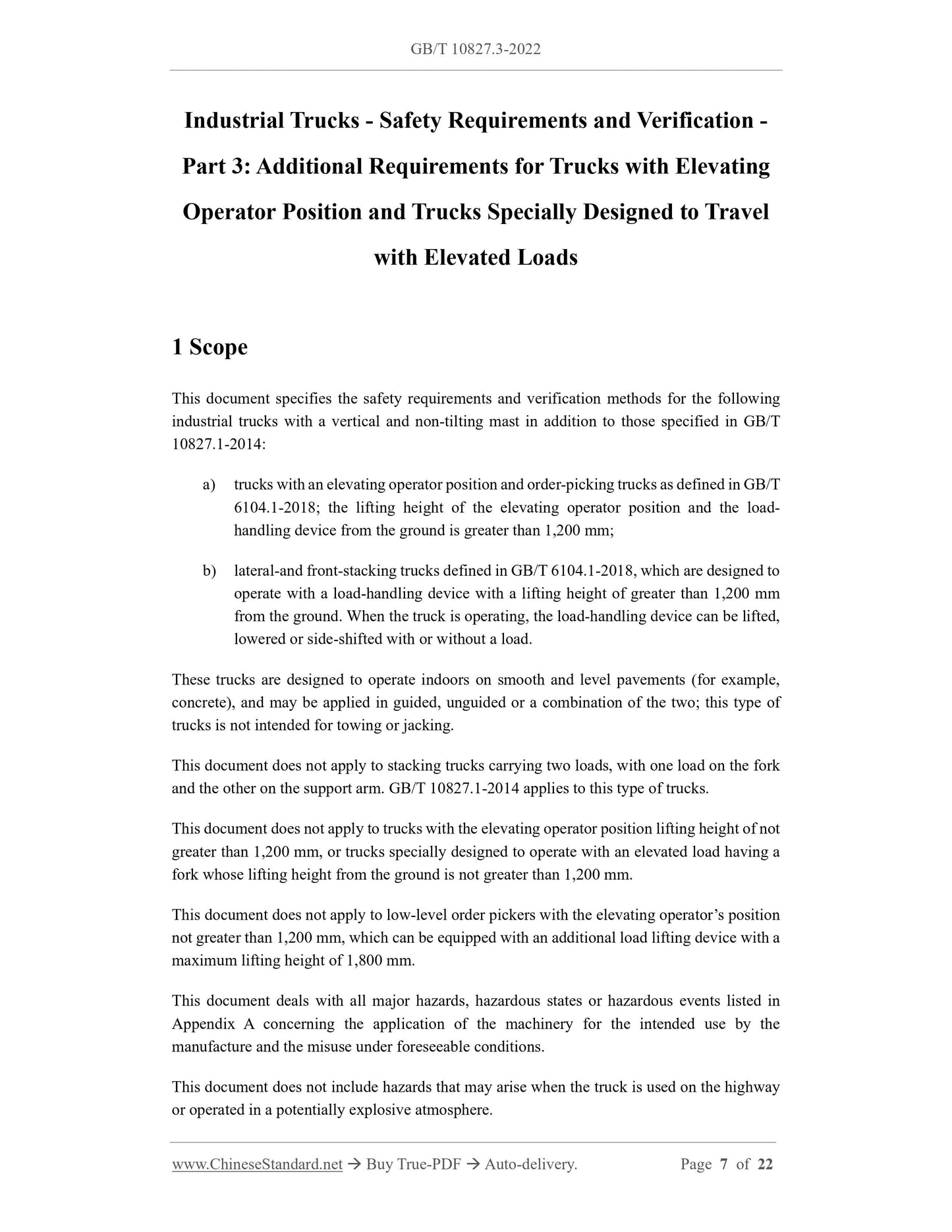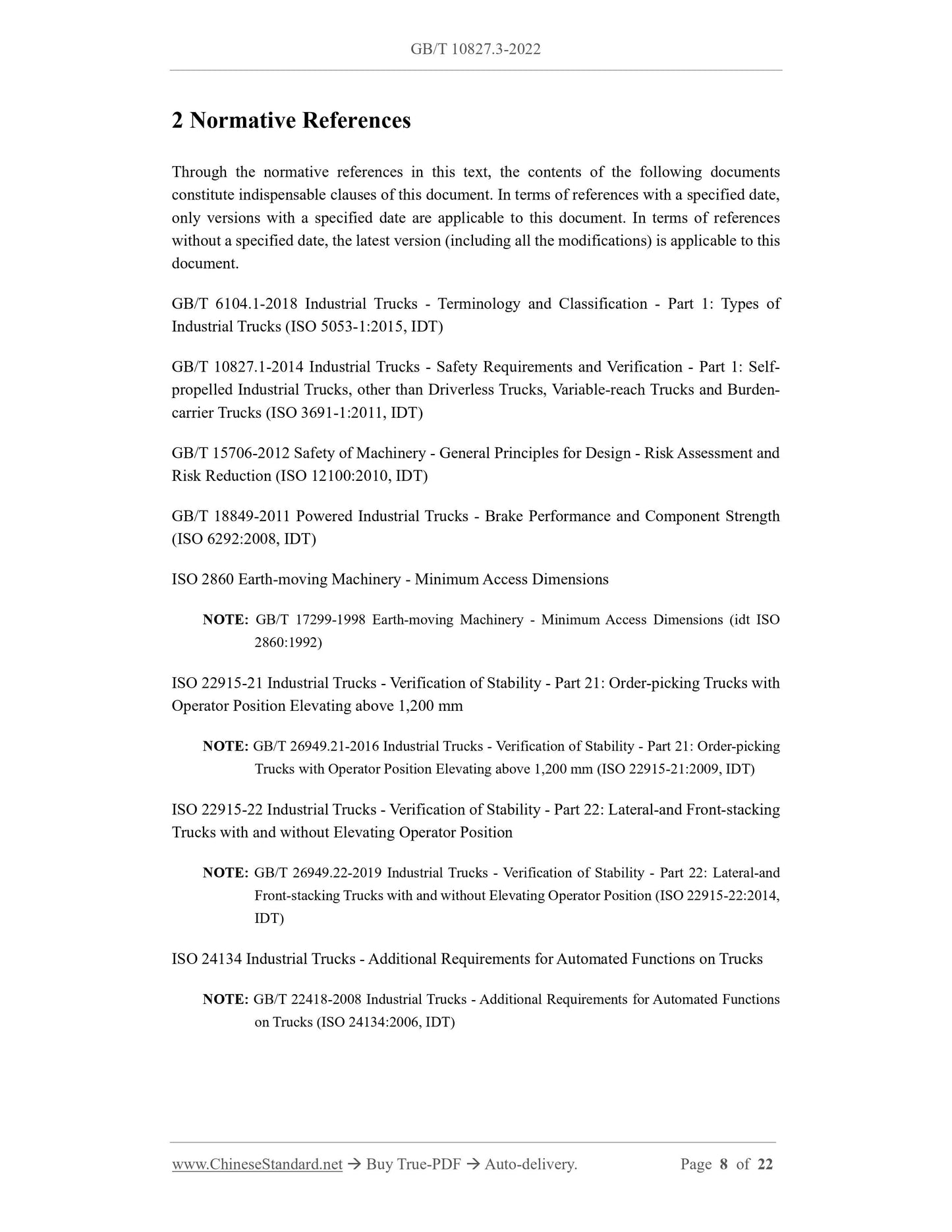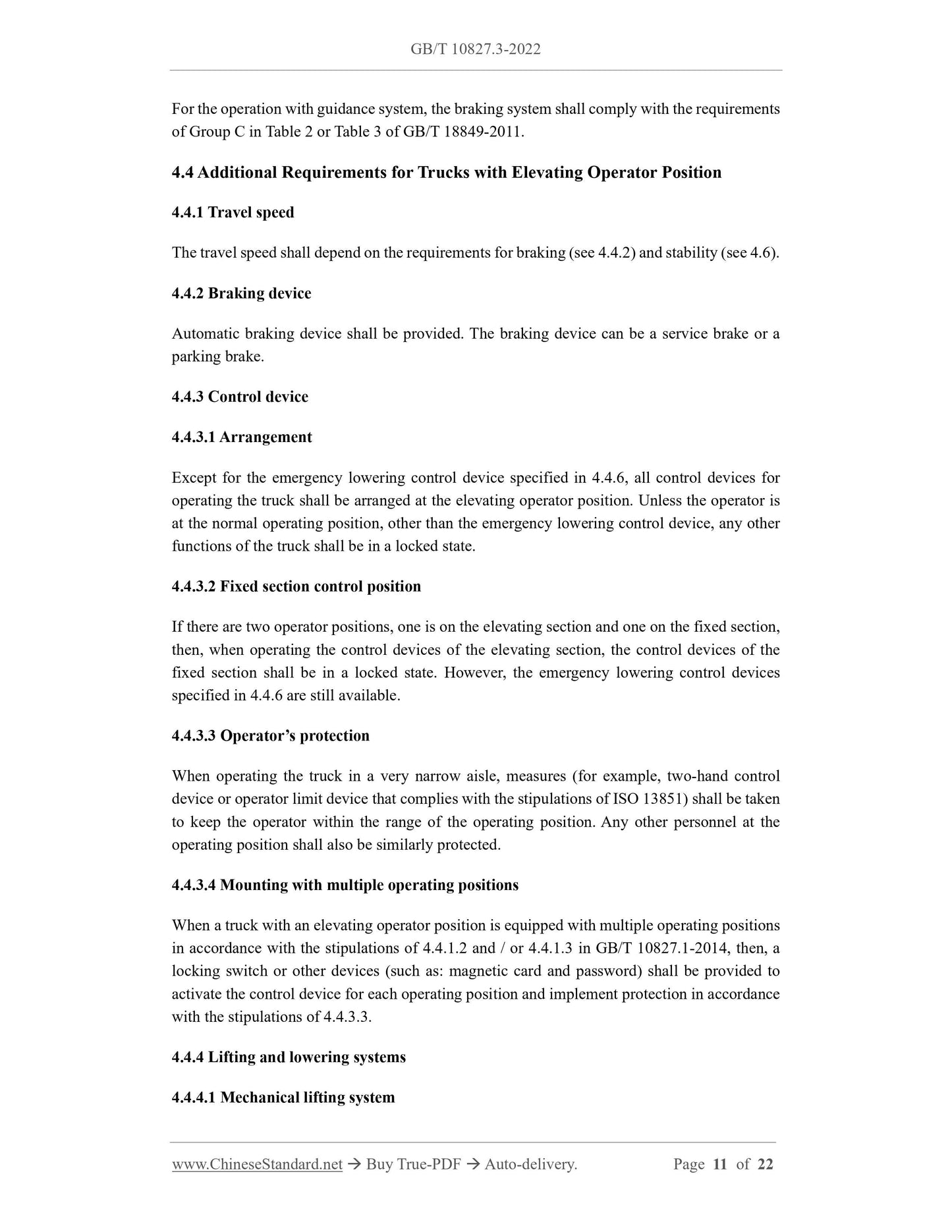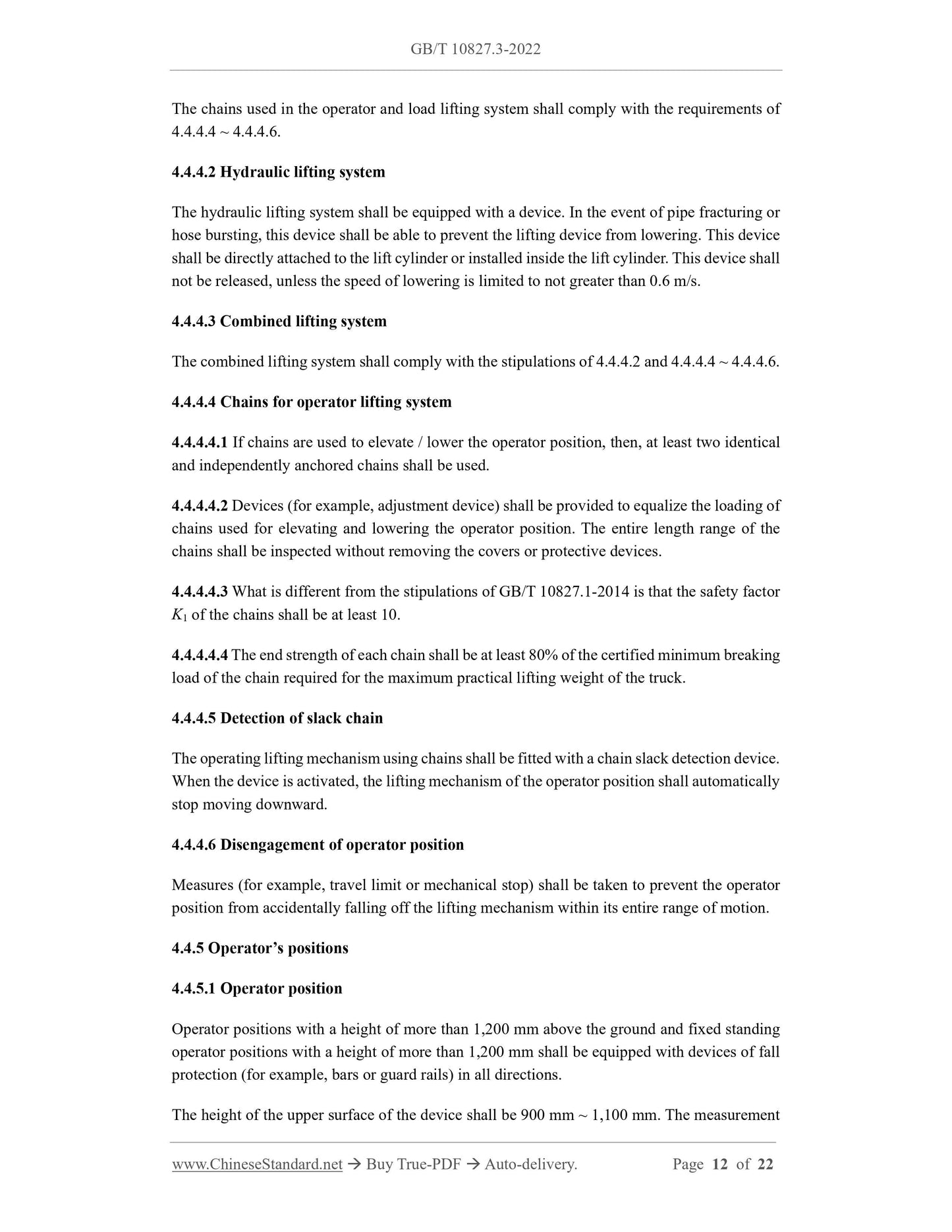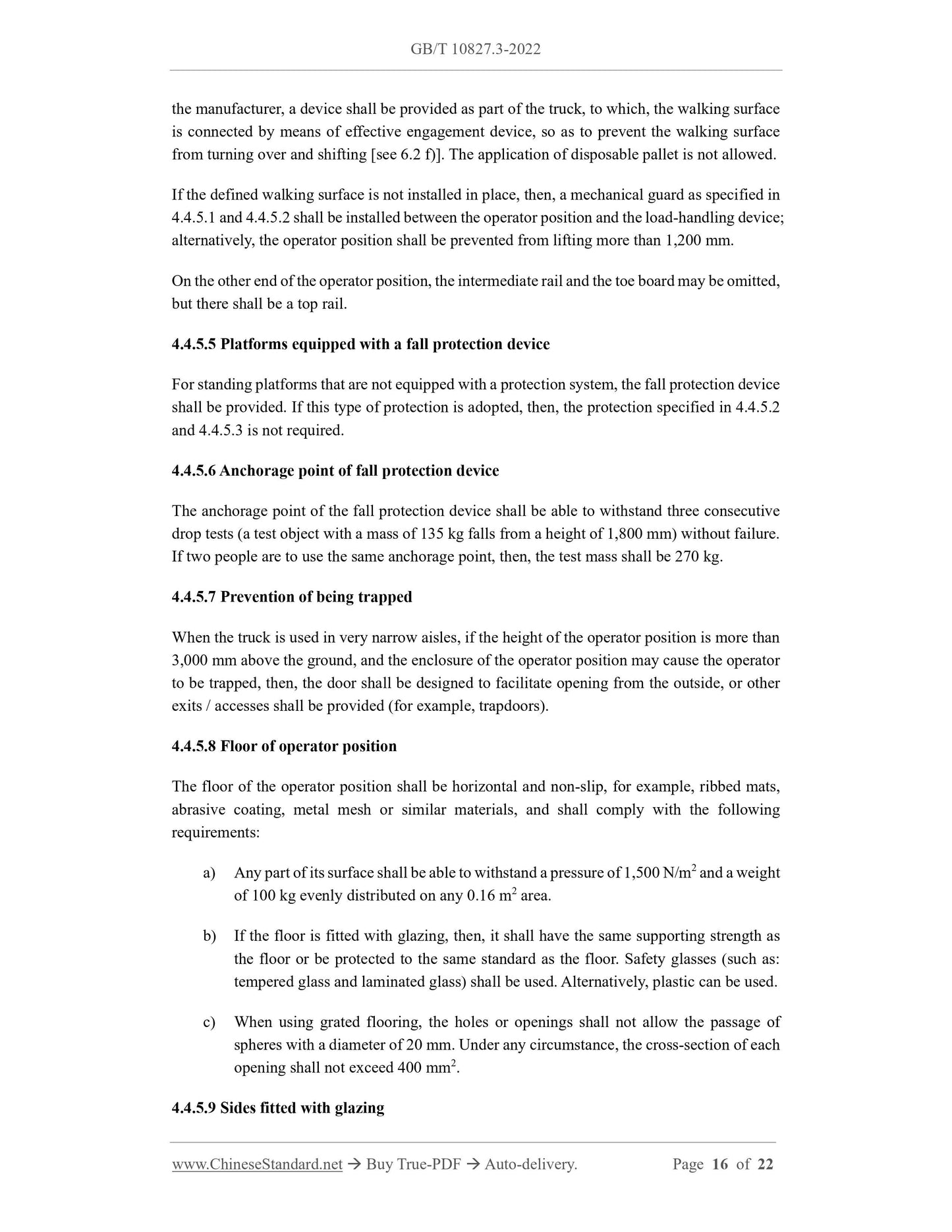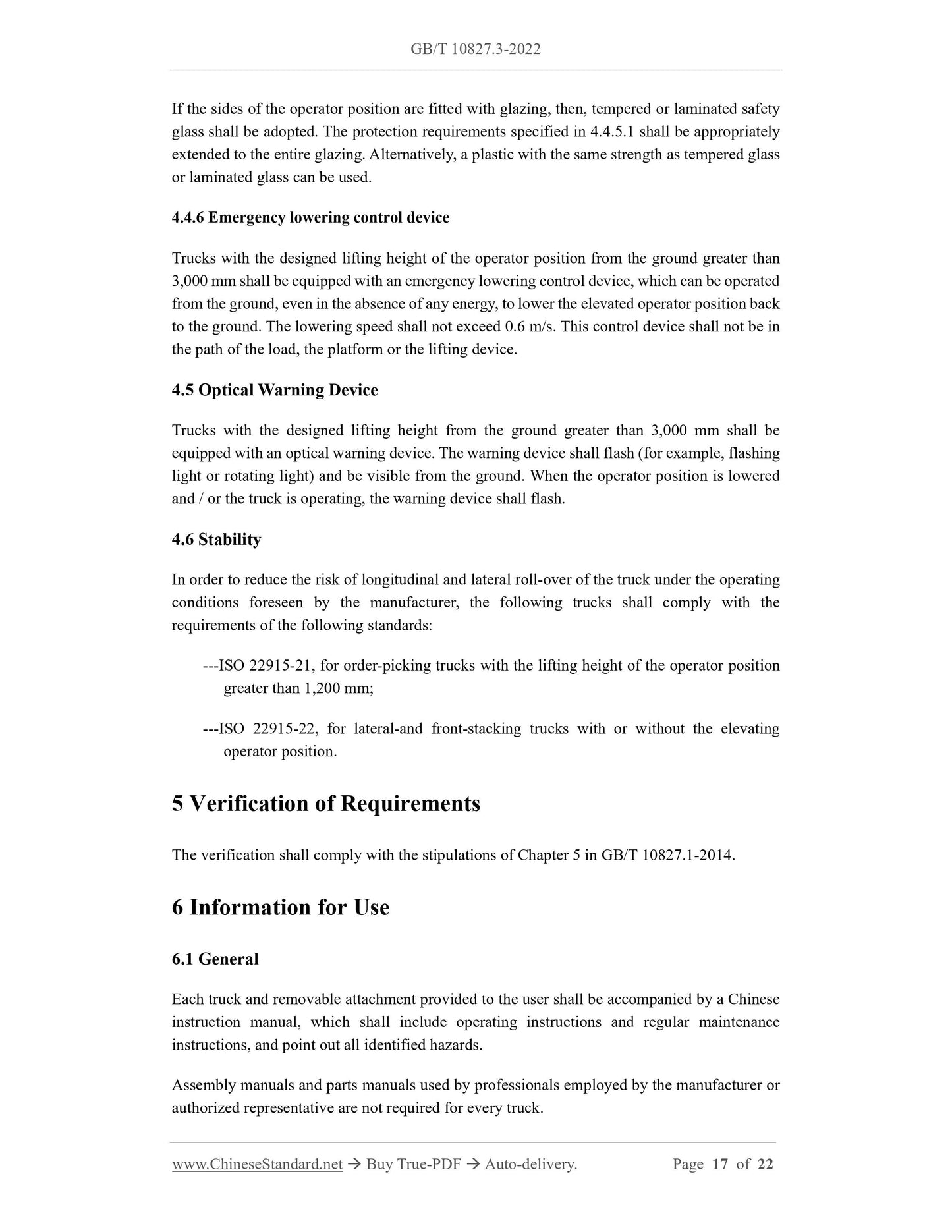1
/
of
8
www.ChineseStandard.us -- Field Test Asia Pte. Ltd.
GB/T 10827.3-2022 English PDF (GB/T10827.3-2022)
GB/T 10827.3-2022 English PDF (GB/T10827.3-2022)
Regular price
$290.00
Regular price
Sale price
$290.00
Unit price
/
per
Shipping calculated at checkout.
Couldn't load pickup availability
GB/T 10827.3-2022: Industrial trucks - Safety requirements and verification - Part 3: Additional requirements for trucks with elevating operator position and trucks specifically designed to travel with elevated loads
Delivery: 9 seconds. Download (and Email) true-PDF + Invoice.Get Quotation: Click GB/T 10827.3-2022 (Self-service in 1-minute)
Newer / historical versions: GB/T 10827.3-2022
Preview True-PDF
Scope
This document specifies the safety requirements and verification methods for the followingindustrial trucks with a vertical and non-tilting mast in addition to those specified in GB/T
10827.1-2014:
a) trucks with an elevating operator position and order-picking trucks as defined in GB/T
6104.1-2018; the lifting height of the elevating operator position and the load-
handling device from the ground is greater than 1,200 mm;
b) lateral-and front-stacking trucks defined in GB/T 6104.1-2018, which are designed to
operate with a load-handling device with a lifting height of greater than 1,200 mm
from the ground. When the truck is operating, the load-handling device can be lifted,
lowered or side-shifted with or without a load.
These trucks are designed to operate indoors on smooth and level pavements (for example,
concrete), and may be applied in guided, unguided or a combination of the two; this type of
trucks is not intended for towing or jacking.
This document does not apply to stacking trucks carrying two loads, with one load on the fork
and the other on the support arm. GB/T 10827.1-2014 applies to this type of trucks.
This document does not apply to trucks with the elevating operator position lifting height of not
greater than 1,200 mm, or trucks specially designed to operate with an elevated load having a
fork whose lifting height from the ground is not greater than 1,200 mm.
This document does not apply to low-level order pickers with the elevating operator’s position
not greater than 1,200 mm, which can be equipped with an additional load lifting device with a
maximum lifting height of 1,800 mm.
This document deals with all major hazards, hazardous states or hazardous events listed in
Appendix A concerning the application of the machinery for the intended use by the
manufacture and the misuse under foreseeable conditions.
This document does not include hazards that may arise when the truck is used on the highway
or operated in a potentially explosive atmosphere.
Basic Data
| Standard ID | GB/T 10827.3-2022 (GB/T10827.3-2022) |
| Description (Translated English) | Industrial trucks - Safety requirements and verification - Part 3: Additional requirements for trucks with elevating operator position and trucks specifically designed to travel with elevated loads |
| Sector / Industry | National Standard (Recommended) |
| Classification of Chinese Standard | J83 |
| Word Count Estimation | 17,164 |
| Issuing agency(ies) | State Administration for Market Regulation, China National Standardization Administration |
Share
